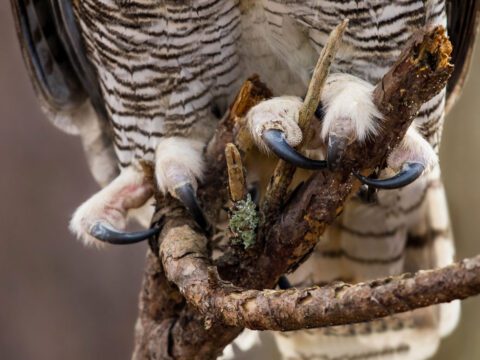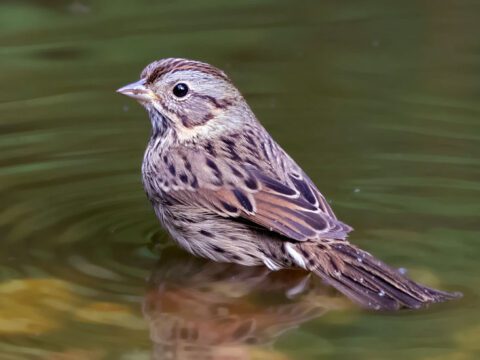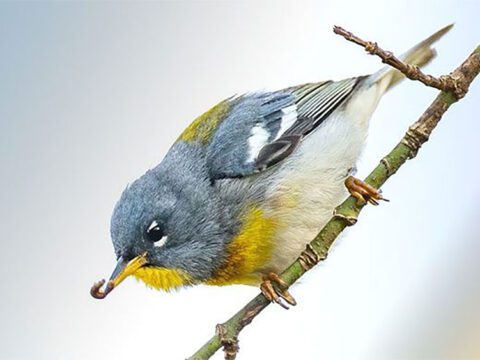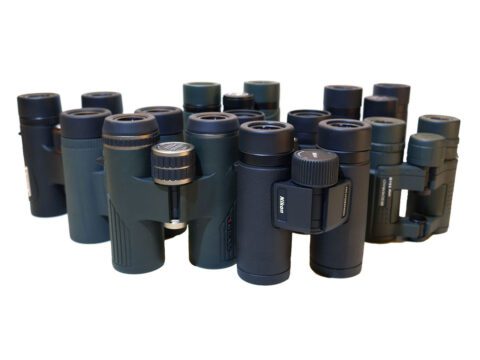How Clark’s Nutcrackers Find Buried Seeds Under a Blanket of Snow
By Jack Connor
October 15, 2013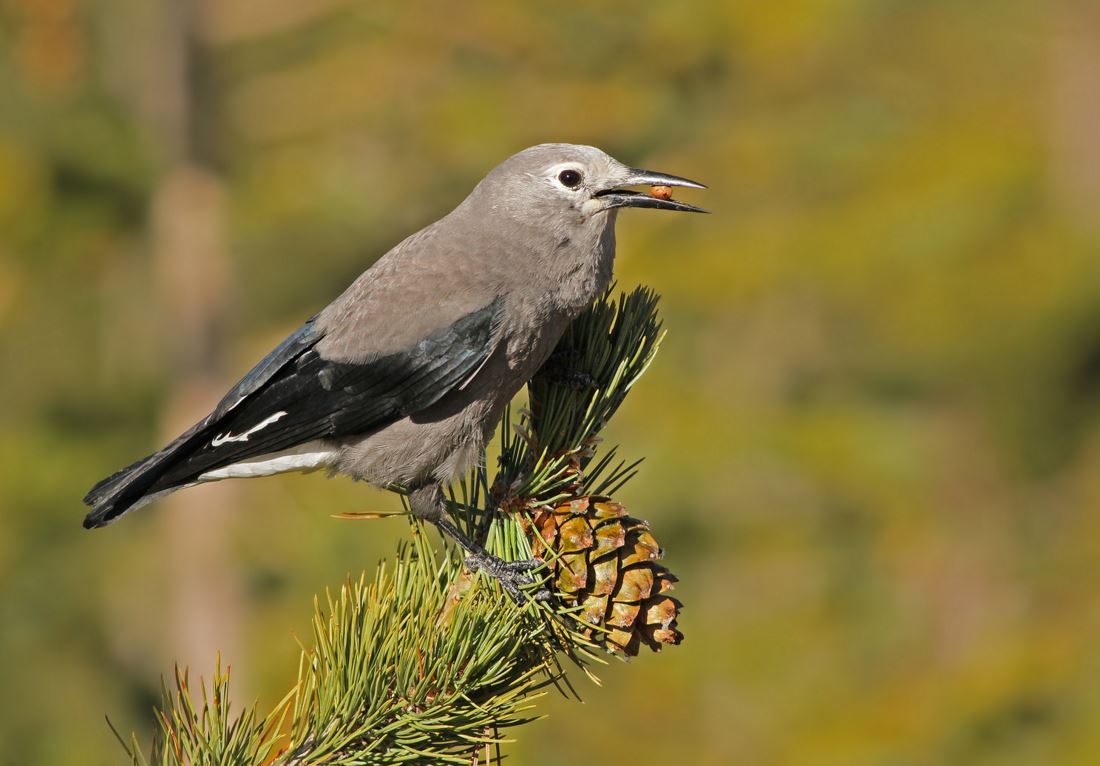
The first person to sense that the foraging behavior of Clark’s Nutcrackers held a mystery seems to have been Victor H. Cahalane of the U. S. Forest Service. On January 19, 1943, he was snowshoeing along Blacktail Deer Creek in Yellowstone National Park. “The exposed plateau seemed almost devoid of bird life [as] snow was falling and swirling in the strong wind,” he later wrote. “The temperature was about 20 degrees above zero.” A nutcracker flushed from the ground not far away, and, in an inspired moment of curiosity, Cahalane shuffled to the spot to see what it had been doing.
“The snow was eight inches deep. The nutcracker had dug a hole three or four inches in diameter at the top, at an angle of perhaps 30 degrees, through the hard-packed snow to the sloping ground. At the bottom…frozen to the ground litter was a Douglas-fir cone…. Evidences on the snow showed that, without any exploratory digging, the nutcracker had driven its tunnel unerringly to the isolated food.” Fox squirrels might be able to execute a similar trick, he believed, but “The chief sense of that mammal seems to be smell, with memory as a possible accessory aid. By what method did the nutcracker locate its hidden food?”
Cahalane’s 1944 brief note in The Auk ends with that question. Was he suggesting that the bird might also be using its memory? If so, Cahalane had guessed the truth: the nutcracker had buried food in that spot months earlier and had remembered its placement so exactly that the snow was no impediment to recovery. The one false clue was the Douglas-fir cone. Nutcrackers sometimes feed on the seeds of Douglas-firs, but—we know now—they do not cache cones. The food source would have been pine seeds the nutcracker had carried to the spot in the pouch under its tongue and buried in the ground the previous fall. If the bird had placed the fir cone there, it would have been one found on the scene and used only as camouflage to help hide the cache from rodents and other nutcrackers.
In his 1946 Life Histories of North American Jays, Crows, and Titmice, A. C. Bent excerpts two sentences from Cahalane’s report, but makes no interpretative comment, and none of the half-dozen correspondents Bent cites to describe the foraging methods of nutcrackers mention caching. The observers explain only that the high-altitude corvid eats a wide variety of foods—including carrion, small birds, eggs, insects, and camp scraps—and that the stomachs of collected specimens demonstrate that it depends especially on pine seeds. Bent also quotes two descriptions of birds shot in 1924 with undigested seeds held in their “distended throats”: a female holding 72 pinyon pine seeds and another female holding 65 whitebark pine seeds. Why they should carry so many seeds and where they were going with these burdens are not discussed.
The breakthrough to an accurate understanding of the Clark’s Nutcracker’s ecology came about indirectly, as a consequence of the work of European ornithologists studying the Eurasian Nutcracker, an Old World species and our bird’s closest relative. In 1948, Russian ornithologist L. A. Portenko detailed the nature of the sublingual pouch that both nutcracker species have under their tongues—a specially expansive bag that can hold dozens of seeds. In 1951, P. O. Swanberg, a Swede, described his field studies of Eurasian Nutcrackers, during which he had observed the birds harvest pine seeds and hazelnuts, carry them in their pouches to storage sites for hiding, and dig them up again weeks and months later to feed themselves and their young.
American ornithologists soon realized that Clark’s Nutcrackers almost certainly also depend on caches, but details from the field by observers who had actually witnessed and recorded the various behaviors were scarce. The birds remain at high altitudes throughout their lives and are especially difficult to track in winter. The most explicit early observation of caching seems to be one by Norman R. French in the mountains of northwestern Wyoming, which he included in a 1955 report in The Condor: “On July 26, 1951, a nutcracker observed at close range was systematically hiding small black objects, probably seeds, in the debris accumulated on small ledges of a cliff. The bird made a hole with its bill by a thrust or two of its head, regurgitated a small black object to the tip of the bill, thrust it into the hole, and placed a small stone over it. Food stored in such locations is available through winter…. Food storage seems to be a characteristic habit of this family of birds.”
More than 20 years passed before anyone studied the bird in the wild carefully enough to draw the complete picture of the nutcracker’s ecology. Those of you who have been members of the Cornell Lab since the 1970s may still have on your bookshelves one of the first fully detailed accounts. A report titled “Foraging Strategies of Clark’s Nutcracker,” by Diana F. Tomback, appeared in the 16th annual edition of The Living Bird in 1977.
It is an extraordinary work of field ornithology. Today Tomback is recognized as one of the world’s leading authorities on the Clark’s Nutcracker, which she has been studying for more than four decades. Back then she was a young PhD candidate at the University of California at Santa Barbara with limited equipment—binoculars, stopwatch, altimeter, U.S. Geological Survey maps, a compass, and a handful of other tools—but she tracked nutcrackers high in the Sierra Nevada Mountains with sharp-eyed diligence through four summers and three winters, from 1973 to 1976, and compiled an amazingly rich account of their lives. She watched them harvest the seeds, observed them caching and recovering seeds, learned to recognize individual birds by size and plumage differences, discovered they sometimes dug up their own caches to move the seeds to other hiding spots, found that they sometimes flew more than seven miles carrying their burdens, traced their seasonal timing (storage beginning in her study area in late August and early September, recovery continuing into the following July), and worked out far more details of the bird’s behavior than can be summarized here.
She recognized that the bird’s relationship with at least one of its primary seed-suppliers, the whitebark pine, was a consequence of coevolutionary development and mutualistic symbiosis, with each species dependent on the other—a deep topic she and many other researchers continue to study to this day. And she also speculated, correctly, about how the birds found their way back to the buried seeds.
How do nutcrackers recover seeds they have buried more than half a year earlier? Smell and memory were the two possibilities mentioned by Cahalane, and by others in the years after his original observation. A third possibility was that the birds found the seeds by sheer chance—with so many nutcrackers burying so many thousands of seeds in so many places, any individual digging in a likely spot might uncover some other individual’s cache. Tomback hypothesized that it was individual spatial memory. “My observations suggest,” she wrote in 1977, “that individual nutcrackers recall the areas and perhaps the specific sites in which they [themselves] stored seed the previous fall. Orientation at the site may be in relation to the microhabitat feature originally selected for storage of the cache.”
Stephen Vander Wall, then of Utah State University, whose work with Russell Balda and other colleagues paralleled Tomback’s in those years, was the scientist who cracked the code. In a now-celebrated investigation begun in 1980 and published in 1982 in Animal Behaviour, “An experimental analysis of cache recovery in Clark’s Nutcracker,” Vander Wall demonstrated that spatial memory was the species’ primary means of recovery. He built an outdoor aviary to house four color-banded nutcrackers and, by carefully manipulating sticks, stones, shrubs, the birds’ ability to watch each other, and other variables, he carefully eliminated other potential cues. At one key point in the experiment, after allowing two of the birds to make more than 100 caches in one area of the cage, he moved all landmarks eight inches to the right. When the birds were allowed back into that section, both had much difficulty finding their caches, consistently digging inches to the right of where they had hidden the seeds.
We now know that individual Clark’s Nutcrackers cache tens of thousands of seeds (often more than 30,000 each) and can relocate them as long as nine months after the original burial. Studies of caching have now documented similar, though more limited, abilities in other birds, especially Pinyon Jays and other corvids.
In recent years Tomback and other ornithologists and foresters have focused their attention on the nutcracker’s partners: the so-called “bird” pines— whitebark pine, pinyon pine, and other five-needled pines of the western states that produce large, wingless seeds and depend on coadapted birds to harvest and plant those seeds. Climate change, blister rust, and the invasion of mountain pine beetles are especially threatening to whitebark pine, the nutcracker’s most important ally. (To learn more, visit the Whitebark Pine Ecosystem Foundation’s website).
But to end this on a positive note, let’s remember a birdwatcher on snowshoes who took the time to stop during a winter storm to investigate what one bird had been doing at a hole in the snow. Following your curiosity while out in the field should be every birder’s first principle.

All About Birds
is a free resource
Available for everyone,
funded by donors like you
American Kestrel by Blair Dudeck / Macaulay Library




